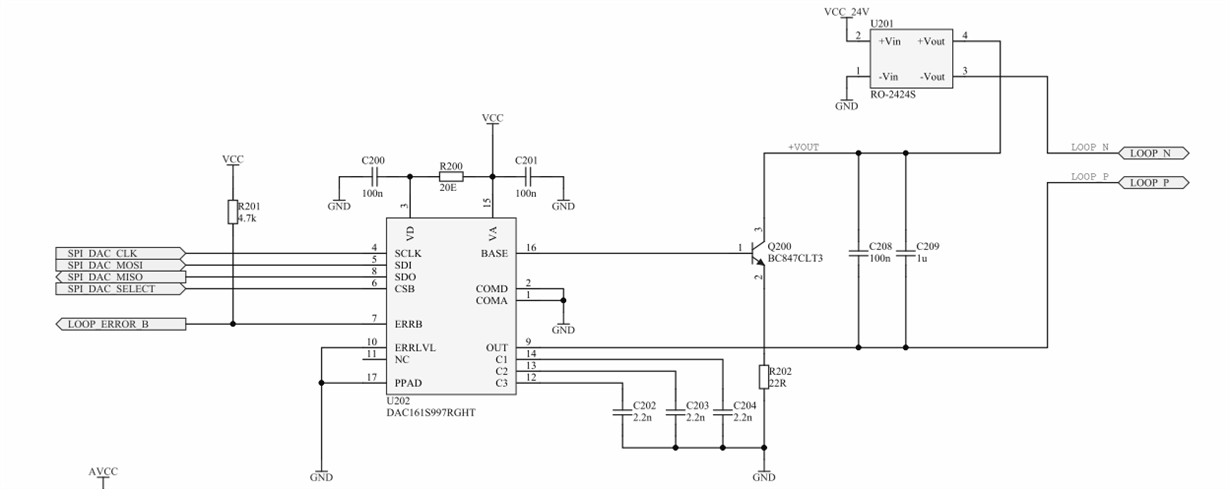Hi
We are using DAC161S997 to create a 4..20 mA current loop. Our system has an MSP430 as controller for the DAC and an additional PWM channel to drive a heater. As the heater current is to high, we cannot go for a loop powered design.
Our design runs of 24V DC. We generate a 3.3V supply (VCC) using an LDO. 3.3V is used to power the DAC, MSP430 and some OpAmps. We have an isolating DC/DC converter to generate our loop voltage, which is isolated from the rest of the system.
Our devices constantly die out in the field. We don't know the reason. One thing is, if the customer connects one of the LOOP_x to GND, it will not work (as expected).
If the DAC is dead it will generate loop errors.
Any ideas what could be wrong with the DAC or the configuration? Do we need any protection? Is the DAC interface sensitive to EMV / ESD?
Thank you
Alex


